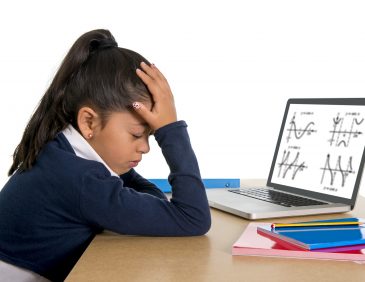Today’s children were born into relative peace and prosperity, however unevenly distributed. But now we are collectively encountering a world of disruption, uncertainty, and anxiety. All of us are figuring out how to cope with rapid change and maintain as much normalcy as possible, while caring for ourselves and each other. We also expect that our society’s inequities will be made significantly worse by the crisis across all aspects of our lives, not just in terms of our health and economy; we are already seeing stark differences in children’s opportunities to learn while schools are closed.

Change of this magnitude can force us to account for what we previously took for granted, and it can push us to reevaluate what matters. Working under new constraints should motivate us to deploy our creativity and design skills. As we navigate the coming weeks and months of remote and online learning, we have a fresh opportunity to consider such questions as:
- What’s normal and what should change? Rather than merely replicating or preserving old methods unquestioningly, it’s worth taking a step back to determine if there’s a better way. What goals are we trying to achieve? In spite of years of education reform, why do our systems continue to serve some children very well, and others very poorly?
- How can we focus on the common good? One could argue that the prosperity of recent decades made us too oriented toward individual achievement and opportunity. However, our education system’s collective outcomes have a significant impact on everyone, from economic opportunity to participation in the democratic process, and our ability to use science and data to make decisions in complex circumstances.
- What connections need the most tending? How do we support the most vulnerable children and families? What strategies can we use to reach them during this time of crisis, when face-to-face opportunities are so limited? What can we learn from these breakdowns to ensure we are better prepared in general?
- How should we allocate our attention among many pressing priorities? School and work schedules have changed, ranging from total closure to online and remote versions of familiar practices. This redistribution of time and routines can serve as an opportunity to think about what’s worthy of our focus and to think more broadly about what remote learning might mean.
Here at the Cooney Center, we are reflecting on these questions as we reprioritize our work and seek out partnerships and projects that can address the new challenges we all face.
One of the key factors that motivate us is the certainty that the effects of COVID-19 will not be evenly distributed. By mid-March, about 20% of Americans had already lost jobs or had their hours reduced. Our uneven and inequitable healthcare system, which has already shown signs of being overwhelmed, will be unable to support the most vulnerable populations. At the same time, we’ve seen communities across the country come together to address our most pressing needs, including programs to expand access to meals for low-income students, neighbors shopping for groceries for seniors, and crowdsourced efforts to sew masks and provide meals for frontline healthcare workers.
In a recent piece in The Atlantic, Ed Yong writes, “Pandemics can also catalyze social change. People, businesses, and institutions have been remarkably quick to adopt or call for practices that they might once have dragged their heels on, including working from home, conference-calling to accommodate people with disabilities, proper sick leave, and flexible child-care arrangements … Perhaps the nation will learn that preparedness isn’t just about masks, vaccines, and tests, but also about fair labor policies and a stable and equal health-care system.”
Our education system is under a stress test: a brand-new, national experiment in online learning for which we are only modestly prepared. Educators will be challenged to replicate the impact of in-person learning by rethinking pedagogical practices, and students will have to work to develop new habits and self-regulation. On top of all this sits the inequitable distribution of internet access, with an estimated 12 million children living in homes without broadband.
What are the new opportunities for learning and education, both in school and at home? Next week we begin a new series on the Cooney Center blog featuring ideas from experts across our network, in response to questions including what must be done now to address the learning and well-being needs of children and families right now, and what we should change in the long term.
Please stay tuned, and be in touch: we’d love to hear how you are doing, and what you are working on. We look forward to building a brighter future with our partners and colleagues.
One more thing, while you’re here: our colleagues at Sesame Workshop have launched Caring for Each Other, a hub of resources that families and educators can use to spark playful learning, offer children comfort, and focus a bit on self-care, too. Each week, as they update content, a Sesame Workshop early childhood development expert will contribute a column with strategies to help us all find ways to breathe, laugh, and play together.

